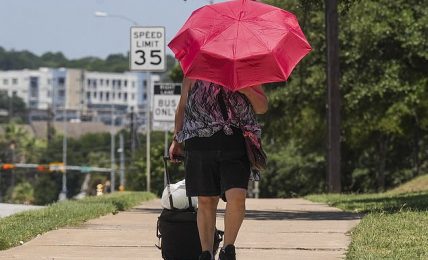The kids aren’t all right.
Brutal videos of schoolchildren fighting and getting beaten have exploded in popularity online — and therapists warn of long-lasting damage to those featured in the disturbing clips.
Barbaric footage depicts campus violence across the nation from prim suburbs to troubled inner cities and students of all genders, some shockingly barely out of kindergarden.
The sickening fight videos of kids socking, stomping and cursing each other are recorded on campus in bathrooms, classrooms and buses — all places where adults are supposed to be supervising.
Hundreds, possibly thousands, of Instagram, Tik Tok, Snapchat and other social media channels dedicated to showing the violence and mayhem have sprung up.
Many are aimed at specific schools. One page devoted to a Texas high school seen by The Post featured a startling 72 fight clips posted over the course of a year before it was taken down — an equivalent of two for every week class was in session.
In many cases, anonymous orchestrators are constantly soliciting and receiving fresh content, making it exceptionally hard for schools or authorities to police.
With many of the beatdowns resulting from bullying, therapists said child victims suffer intense shame and embarrassment from having some of the worst moments of their childhood immortalized online for all to see.
Some of them, psychologists warned, resort to ending their own lives, as in the case of 11-year-old New Jersey schoolgirl Felicia LoAlbo-Melendez, who was found on Feb 6.
In Florida, a girl of similar age was recently forced to flee the state entirely after her beating was posted online, spurring relentless mockery.
Her mother said she left the school where the original attack took place — but was then compelled to escape her new campus after kids found the video and resumed the torment.
“In the old days, if you got beat up, no one knew about it unless they were there,” said Florida-based child psychologist Tina Connan. “That’s not the case anymore.”
Connan said assailants and amateur videographers don’t consider the long-term consequences of posting the material and are motivated by thirst for social media popularity.
“It’s not entertainment when someone is being victimized like this,” she said. “This is what is happening with the cataloguing [of] the videos.”
Connan said a child she counsels whose beating was posted online now recoils any time they see someone pull out a phone.
Other victims simply retreat into a world as small and safe as they can create — oftentimes their bedrooms.
Counselors told The Post that damaged self-esteem triggers a downward spiral of isolation, fear and poor academic performance.
Many kids whose humiliations are posted online refuse to return to their schools.
A shocking video released in May showed a mob of Texas students attacking an administrator who tried to break up a fight — leaving her severely injured and hospitalized.
The footage, which was posted to social media, showed two Westfield High School freshmen beating each other in a hallway before the assistant principal intervened.
Compounding the trauma for featured combatants, commenters often post student names and mock those on the receiving end of merciless assaults.
“They made him look like a bitch,” wrote one poster in reaction to a video posted to a fight account for a South Carolina high school.
Targeting the student by name, another tormentor advised the losing fighter to split town.
“At that point you might as well leave the school,” the anonymous person wrote.
Type in any American school with a common name along with the word “fights” and dozens of pages pop up on Instagram — some with just a handful of violent videos and others with dozens.
Many of the posts show students brawling for extended periods before an adult appears. Others present beleaguered teachers attempting to halt the fracases while other students hold their phones high and cheer on the chaos.
“I don’t think people have any idea how many fights there are in school right now,” a Brooklyn middle school teacher told The Post.
“It’s constant, it’s overwhelming, it’s demoralizing. And a lot of times, administrators are more concerned about their numbers and reputation than keeping parents informed.”
The veteran educator said many principals are aware of the fight pages that correspond to their schools and do their best to stamp them out.
“It’s whack-a-mole,” she said. “One goes down, another pops up.”
Teachers, she said, are increasingly loath to wade into the melees, fearing administrative backlash — or injury.
“If you put your hands on someone, you are risking getting something in your file — or worse,” she said. “We talk about it all the time. It’s not worth putting your pension on the line, I’ll tell you that.”
Manhattan-based therapist Kimberly Hershenson, who runs a private practice, said the sheer volume of fight videos normalizes extreme violence in the minds of minors.
“Kids can begin to think that this is okay — especially if something gets a lot of likes and comments and feedback,” she said.
Students battered on video often blame themselves for their public humiliation, Hershenson said.
“If there are people cheering it on, it could make them feel like it was deserved, like ‘There is something wrong with me,’” she said. “‘People are going to think something is wrong with me because I’m being bullied.’”
Meta, the parent company of Instagram, did not return a request for comment.



